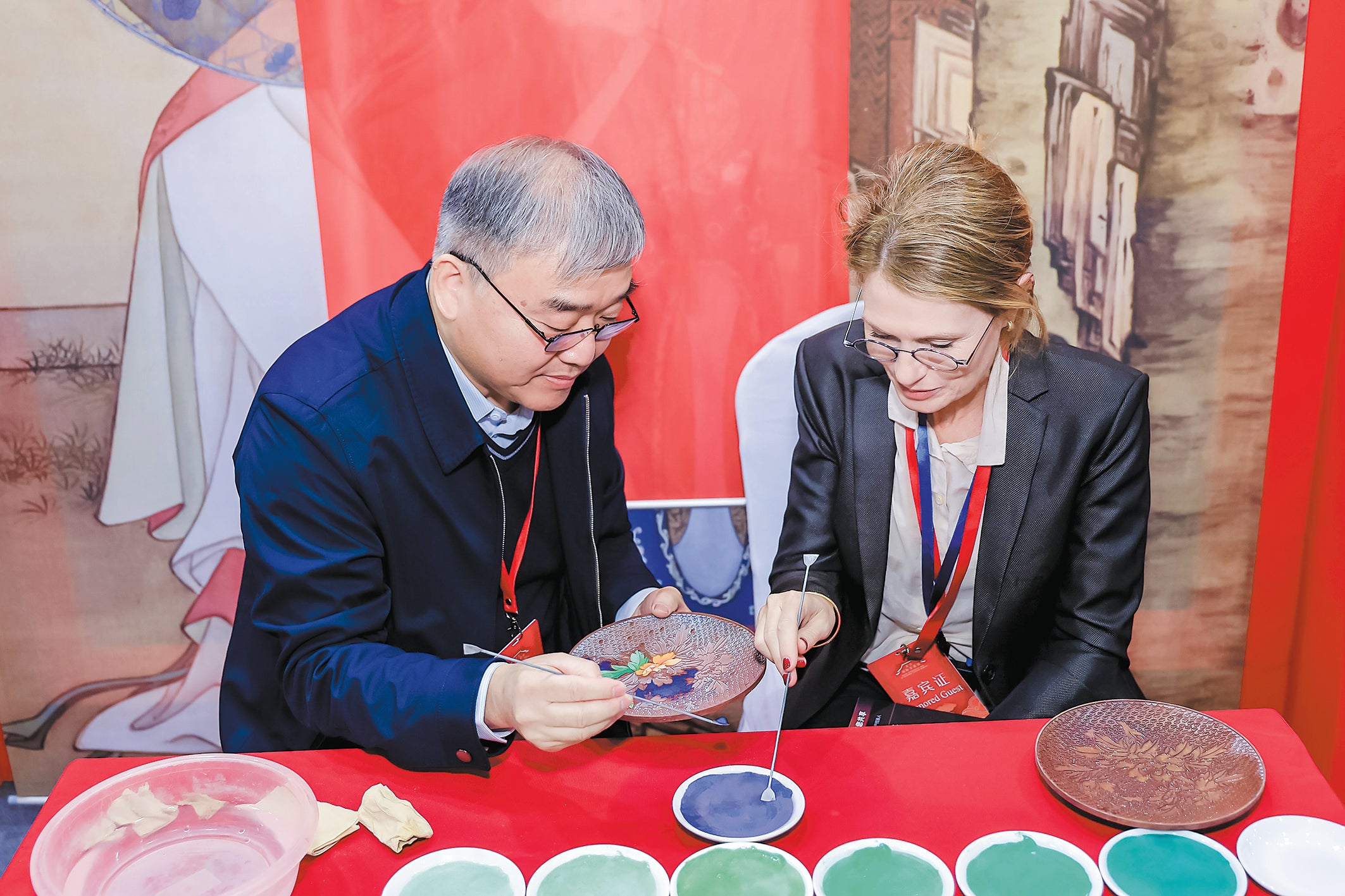Stitching together the strands of culture
THE ARTICLES ON THESE PAGES ARE PRODUCED BY CHINA DAILY, WHICH TAKES SOLE RESPONSIBILITY FOR THE CONTENTS

Hundreds of tiny white pearl and coral beads became delicate tea flowers on a costume of Qing Dynasty (1644-1911) style as a result of Bi Hong’s magic touch.
“They were 0.043-0.047 inches in diameter and had holes drilled into them before being sewn together,” she said, presenting her work to a crowd around her stand at the Beijing International Week of Intangible Cultural Heritage in late October, 2023.
“It’s an innovation on traditional culture,” said the inheritor of Beijing embroidery, a form of national intangible cultural heritage.
Beijing embroidery, also known as palace embroidery, was primarily used for imperial clothing. Both its technique and artisanship emphasise harmony, smoothness, delicacy and intricacy. “It also places a strong emphasis on the nobility of style, featuring a variety of patterns and exquisite details,” she said.
Over the years, Bi has made a point of preserving traditional clothing craftsmanship, while showcasing the innovative stitching process of combining nature and art in her designs. Her work features blooming flowers and falling petals, expressing the beauty of different stages in the journey of life. At the event, she also demonstrated the meticulous stitching required to her audience, who got to appreciate the ancient art at close quarters.
“I’d really love to see more people appreciate (Chinese) culture through costumes,” Bi said.
She was one of 1,000 delegates from all over the world who brought 500 intangible cultural heritage projects and 3,000 exhibits and artworks to the cultural event, which consisted of sections that displayed China’s efforts in protecting and supporting intangible cultural heritage, distinctive domestic handicrafts, international cultural forms and creative cultural products.
Yuan Changjun gazed at a thin silver wire as he bent it into a triangle with a small pair of tweezers, next to a mound of what seemed like hundreds of others.
“This is the basic unit that is to make patterns on big filigree items, such as orchids,” said Yuan, a master artist of filigree inlay.
The silver handbag covers, vases and mythical animals on his stand were notable for their intricate, stunning patterns. Everything was done by hand, including pulling the silver thread, which can be as thin as a hair. For a long time people were unfamiliar with the art because it used to be exclusively used by royal families and symbolised wealth, Yuan said.

He considers arts and crafts the wisdom of workers, as well as a practical system. Such public displays help people appreciate the soul of culture and artisanship, he said.
A dozen feet away, jewellery and lunchboxes decorated with patterns of landscapes, birds and butterflies glittered on the gold lacquer inlay stand.
“If you look closely enough you can see the mountain is actually made of gold foil,” said Shi Yanling, an inheritor of gold lacquer inlay. Natural black lacquer is then applied to create veins of the mountain, she said.
As for the lunchbox, the butterfly patterns and feathers of the birds are carved and then painted, before the gold powder is carefully sprinkled to fill in the spaces. “The boxes shine when they catch the sunlight,” Shi said.
About 66 feet from Shi’s stand, shouts occasionally burst from the imperial carpet section as Guo Lanhong demonstrated the value of a large carpet suspended in the air.
“The elastic yarn is made of cotton at the core, and covered with gold foil,” Guo said.
One inch of the carpet consists of more than 100 lines, each of which takes a proficient artist about half an hour to weave, she said. “It usually takes more than a year for a master to finish a large-sized carpet.”
Fine artisanship and hard work guarantee the carpet’s high value, both artistically and financially, Guo said. “Historical anecdotes say ancient emperors would only use such a carpet when distinguished guests came, and would put it away once the reception was over.”

Bookmark popover
Removed from bookmarks